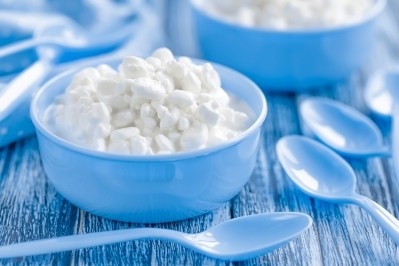Guest article
‘Demand for probiotics is increasing significantly’

Factors such as age, stress, and poor diets are responsible for digestive ailments, bloating, and reduced resistance to infections; consumption of probiotic-enhanced products (containing live microorganisms - probiotics) helps to alleviate these conditions.
Probiotics are found in both supplement form or as components of food and beverage products. Their integration with inexpensive health foods such as yogurt, fruit juices, and cultured dairy drinks has contributed to a significant market size. The most commonly used bacteria include Bifidobacteria and Lactobacilli, which are found in various products including yogurt and dairy beverages. In the dairy category, yogurt is the most popular option for consumption of probiotics.
Since 2016, there has been a rise of over 30% in the sales of refrigerated probiotic drinks and juices including yogurt, HPP juices, almond milk, cold-pressed water with flavors, herbal tea, and even coffee. The market for dairy products and non-dairy beverages is cumulatively estimated at $32.3bn in 2017. The non-dairy beverages segment is expected to grow at a CAGR of 9.6% from 2017 to 2022.
Probiotic progress: From yogurt to cereals and baked goods
Yogurt is a primary probiotic food that is produced by fermentation of milk by starter cultures. In dairy products, yogurt has seen wide acceptance among consumers globally. European consumers prefer probiotic yogurts that are available in convenient “daily dose” formats. Yogurts are available in retail stores, and thus the expansion of retail outlets at a global level has boosted the consumption of yogurt. Manufacturers are developing probiotic yogurts in a variety of flavors to attract consumers.
Similar to yogurt is a fermented dairy product known as Kefir, a rich source of probiotics, which is also gaining popularity due to its functional benefits. The extended application scope of probiotics in non-dairy beverages is gaining international attention. Manufacturers are marketing a variety of probiotic drinks with added health benefits. Leading players in this market, such as Yakult, have made huge investments in research & development for innovative probiotic products.
For instance, probiotic yogurt is available in various forms such as low-fat yogurt, non-fat yogurt, and Greek yogurt. Leading companies are trying to attract potential customers by developing products based on customer preference. Innovations in technology have enabled the addition of specific beneficial bacteria to all types of beverages and foods including cereals and baked goods.
Liquid probiotic products include yogurt and probiotic drinks. Liquid probiotics are easier to mix and provide a uniform texture to the consumable product and consistent concentration in solutions and are hence highly demanded for yogurt and beverages.
Manufacturers are coming up with various innovations in probiotic beverage products, thus providing a wide variety of choices for consumers. For instance, flavored probiotic yogurt is gaining immense popularity in the US.
Technological advancements in the field of probiotics have enabled their inclusion in supplements and other non-milk-based products. The integration of probiotic strains in juices has enabled many companies to penetrate the global juices market. Addition of probiotics in fruit juices is beneficial to people who are allergic to milk proteins and milk products - Ganeden offers probiotic juices for various target populations including kids, athletes, and the elderly.
Competitive market
Probiotics have conventionally been included in the dairy beverages segment, due to their compatibility with dairy ingredients. Probiotics are extremely compatible with dairy products - traditionally they have been used as live cultures in the fermentation of dairy beverages.
Probiotics are also beneficial to human gut microflora, which has contributed to the success of probiotic dairy products such as yogurt and yogurt drinks manufactured by Yakult, Danone, and Nestlé in Europe and Asia Pacific.
Companies such as Yakult Honsha and Chr. Hansen have developed patented strains of microorganisms claiming to trigger specific health benefits; there has been a proliferation of probiotic suppliers who develop customized strains of microorganisms for integrating with a diverse set of products.
The key players in the probiotics beverage market include Chr. Hansen, Danone, Yakult Honsha, Nestlé, and E.I. du Pont de Nemours and Company (DuPont). Other players include Morinaga Milk Industry Co., Lallemand, Probi AB, Bifodan, BioGaia, Probiotics International, and Nebraska Cultures.
Danone held one of the leading positions in the global probiotics beverage market in 2016. It maintained its leadership in the market through a strong distribution network across North America and Europe. The company focuses on product differentiation as its key business strategy to ensure its growth in the probiotics market.
Yakult Honsha provides a wide range of probiotics beverage catering to the needs of consumers globally. It offers a wide range of probiotic products and focuses on the new product development strategy to gain an edge over its competitors, with innovative and advanced products.
Three main factors driving increased consumption
The increase in health-conscious consumers across the globe, and growth in consumption of functional foods & beverages, is fueling the growth of probiotic products.
There are three main factors driving the human consumption of probiotic products: maintaining health, promoting health, and reducing the risk of diseases and disorders.
The level of probiotic consumption among the different age groups of people is also driven by several factors — the primary one being awareness and willingness to accept bacteria as a potentially health-benefiting ingredient.
The routine consumption of probiotics in diets results in functional improvements in the health of the consumers. It is observed that the integration of probiotics yields positive results, specifically in the case of products that are traditionally associated with health benefits such as yogurt, cultured drinks, and fruit juices, rather than with indulgence foods such as chocolate or ice cream.
Regular consumption of probiotic drinks prevents the growth of harmful bacteria inside the digestive tract, which leads to better nutrient absorption and bowel movements. Also, probiotics increase the lactobacilli count in women and prevent bacterial vaginosis, yeast infection, and urinary tract infection. They improve interstitial microbial balance by lowering the pH levels, leading to higher projected adoption over the coming years.
One of the recent trends spurring the growth of this market is the availability of ready-made packs of functional probiotic drinks for on-the-go consumption. These products are easily accessible, and this convenience factor plays a significant role in influencing consumer purchase decisions. The growing customer base for these products has necessitated an increase in the availability of these products in a variety of retail formats such as supermarkets, hypermarkets, and pop-up stores, making it a convenient purchase for consumers.
Increased consumer demand in developed markets
The global demand for probiotics is increasing significantly due to growth in awareness among customers about their direct relation to digestive health benefits, rise in demand for nutritional food, and increase in demand for quality animal products. The rise in population and increase in disposable incomes in developing Asian countries are driving the demand for functional beverages, which in turn serves as a driver for the probiotics market.
Meanwhile, according to the American Dairy Products Institute, in 2014 the demand for probiotic-based yogurts was $2,404m; in 2019, the value for probiotic yogurts for the North American region is projected to reach over $4,600m. Consumers are more aware of the importance of probiotics with regard to maintaining a strong immune system and gut health, leading to the sustained growth of probiotics components in the market.
To attract such potential consumers, these products are made available across grocery stores, supermarkets, pharmacies, and health food shops in the developed economies such as the US, Canada. Therefore, consumer awareness of the health benefits associated with the consumption of probiotic products is a major factor driving the overall demand of the probiotics market in developed economies.
Aslam is a Senior Market Research Analyst with over 4 years of experience tracking the food & beverage ingredients industry. Over the period, he has worked on over 50 different food ingredient market projects to provide market intelligence and key strategical solutions to several Fortune 500 clients, assisting them in their business evaluations. His work involves market engineering, data analysis, competitive benchmarking, and devising market strategies in-line with client requirement.
Aslam holds a Masters of Business Administration degree in Marketing from Sinhgad Institutes, Pune and a Bachelor in Engineering (Mechanical).






